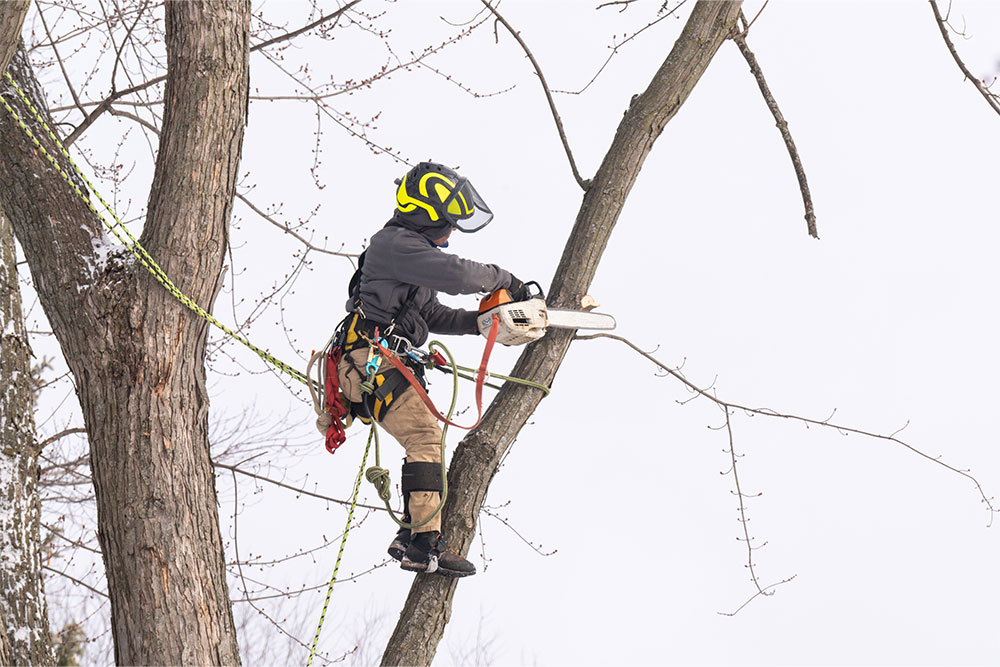Residential Vs. Commercial Tree Care Explained

The needs of trees on a residential property are vastly different from those on a commercial property. While both require professional care to remain healthy and safe, the approaches, tools, and challenges are not the same. Understanding these differences is key to choosing the right service.
If you are managing trees at home or overseeing a commercial landscape, knowing what each type of tree care involves will ensure the proper maintenance for long-term health and safety.
The Scale of the Work
One of the most obvious differences between residential and commercial tree care is the scale of work involved.
On residential properties, homeowners often focus on a few trees, sometimes only one or two, located near their house. This allows for more personal, hands-on care. Most residential tree trimming or cutting services are simpler and typically require only basic equipment such as hand saws, pruning shears, or chainsaws. In some cases, specialized tools are needed for large trees, but the scope remains manageable.
In contrast, commercial tree care involves large properties with numerous trees. For example, a commercial property like an office park or shopping center may have dozens, even hundreds of trees to manage. These trees often vary in size and species. The complexity and volume of work are much greater, requiring specialized equipment like cranes, chippers, and sometimes even large-scale machinery for removing or pruning trees. These larger jobs often demand more personnel and coordination to complete safely and efficiently.
Different Goals for Different Properties
The goals for residential and commercial tree care also vary significantly.
Residential tree trimming often focuses on aesthetic appeal and ensuring that trees do not pose a safety hazard to the home. For example, trimming limbs away from the roof or driveway is a priority, along with removing dead or diseased branches. Homeowners may also want to address tree health by pruning for better air circulation and light penetration, which helps the tree grow stronger and more evenly.
For commercial properties, tree care often revolves around maintaining safety, accessibility, and a professional appearance. Trees planted along sidewalks or parking lots need to be trimmed regularly to avoid obstructing foot traffic or vehicles. In some areas, trimming trees might be necessary to meet local ordinances or to ensure safety for pedestrians and drivers. Additionally, commercial tree care often includes more extensive health assessments to avoid costly damage or liability issues.
Regulations and Permits
On commercial properties, trees are often subject to local city or municipal regulations. Local governments may require special permits for tree removal or pruning, especially if the trees are part of an urban forestry initiative or are protected species. Commercial property owners must also consider the impact of their trees on nearby buildings, streets, and infrastructure. As a result, a tree survey is often required to assess health and safety risks.
Residential properties may also need permits, particularly when removing or pruning large trees, but the process is typically simpler. Homeowners are generally required to follow local guidelines but may not face the same regulations as commercial properties, especially if their trees do not fall under protected classifications.
Tree Removal and Replacement
Tree removal is another area where residential and commercial tree care differ significantly.
On residential properties, tree removal is often necessary when a tree becomes too large for the space, or if it becomes diseased or poses a risk to the home. In these cases, homeowners may hire a tree cutting service to address the problem. Tree removal is typically more straightforward since there are fewer trees, and the area is smaller.
In commercial settings, tree removal is more complex. Not only do large properties require specialized equipment for safe removal, but commercial tree removal often involves more planning. For instance, trees might need to be replaced as part of city regulations, or due to the needs of the landscape design. In some instances, commercial properties may even need to follow environmental restoration guidelines, depending on the scope of work.
The Importance of Tree Maintenance
Regardless of whether it is a residential or commercial property, regular tree care is important for a variety of reasons. Proper tree care prevents safety hazards, enhances the landscape, and promotes environmental health.
On residential properties, homeowners can typically handle the bulk of routine tree trimming and care, but professional services are still necessary for larger jobs. For commercial properties, regular tree care is even more important to avoid large-scale issues that could affect the property’s functionality and overall appeal.
Coleman Environmental Engineering, LLC understands the differences between residential and commercial tree care. We specialize in maintaining both types of properties with our tailored vegetation management services, offering tree trimming, removal, and other essential care to keep your property safe and looking its best.
